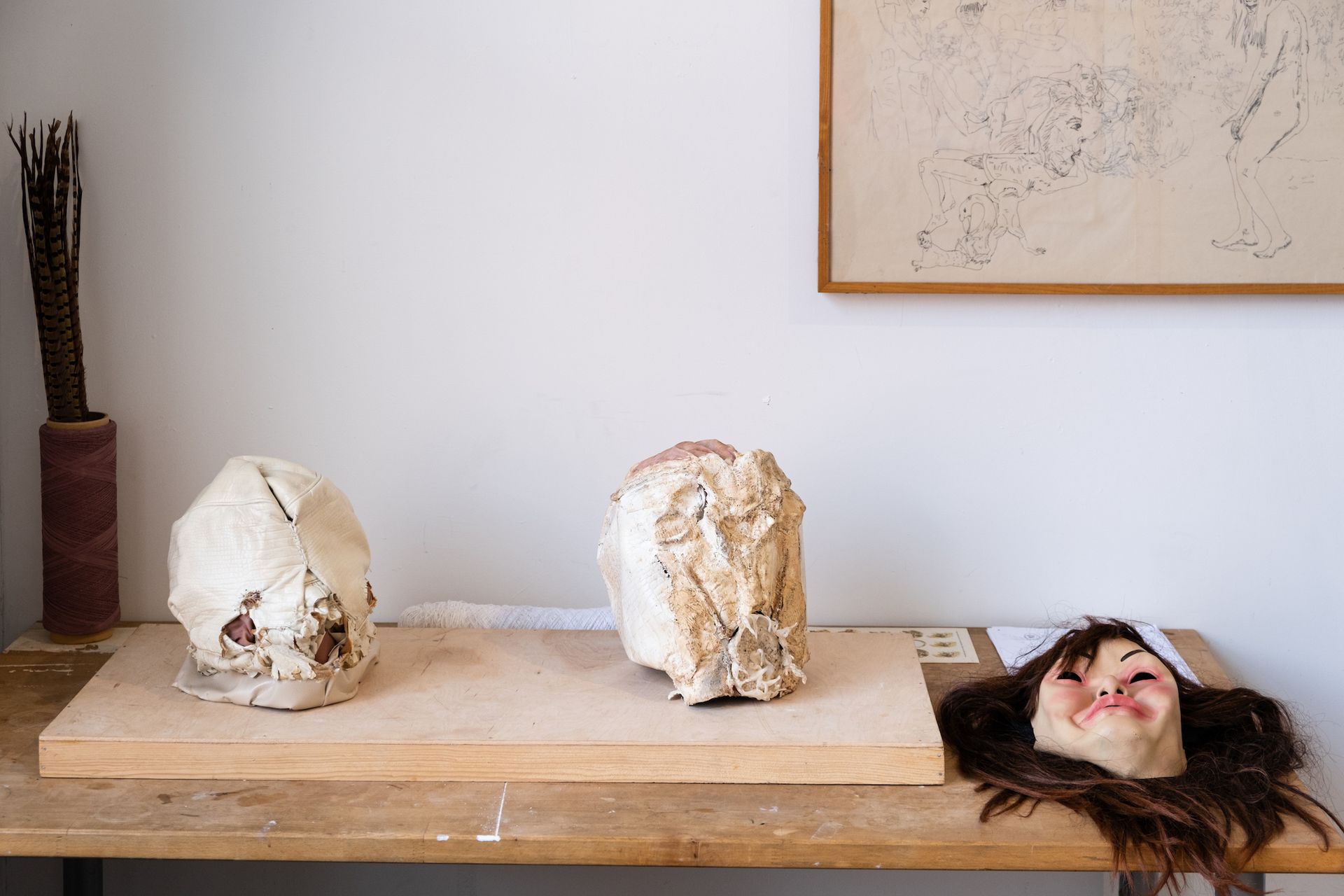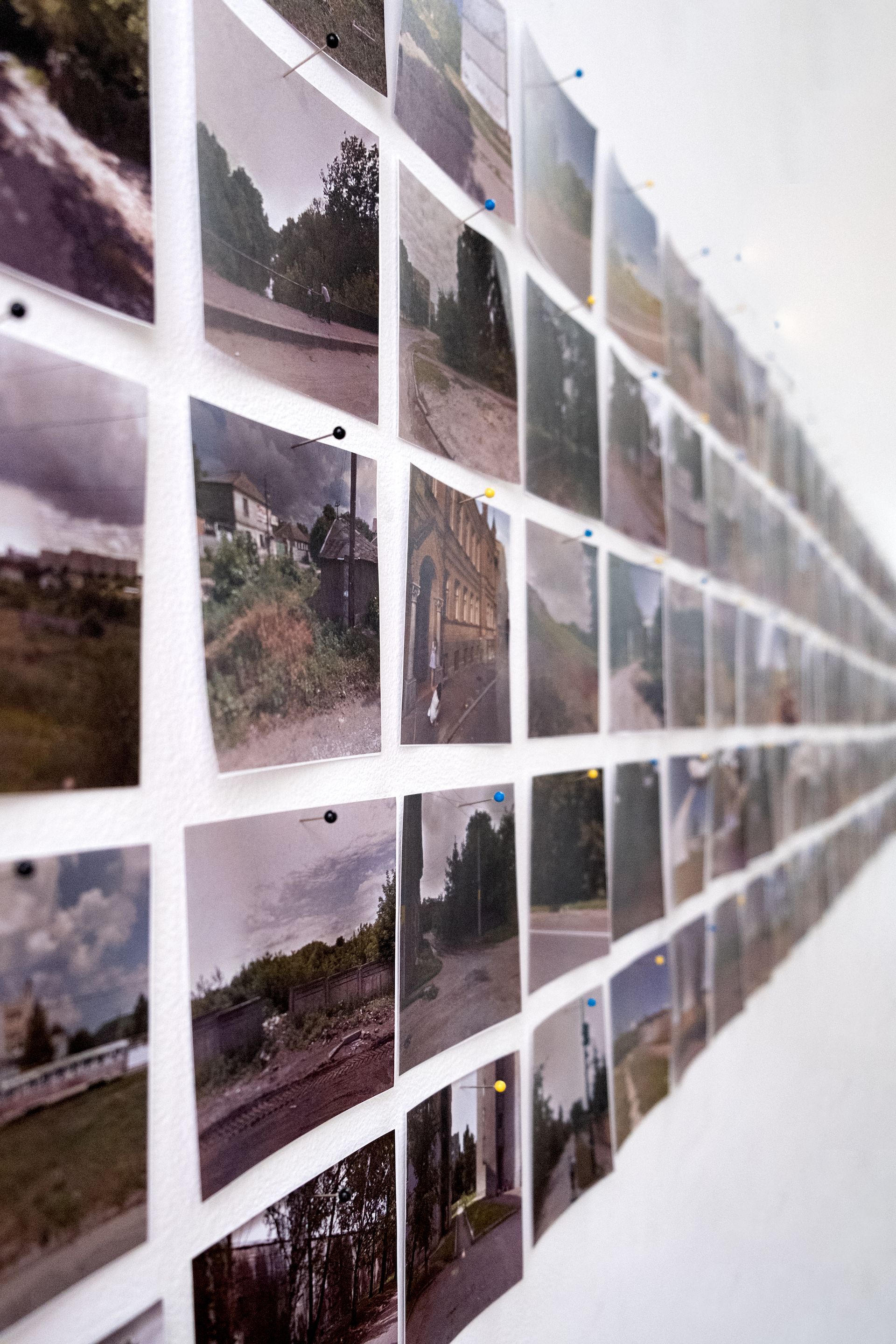AES+F, the video art collective formerly based in Moscow that has broken all ties with Russian state institutions since the invasion of Ukraine and halted all projects in Russia “until this regime is no longer in power”, is sponsoring artists from Russia and Ukraine for a residency in Brooklyn, New York.
The collective’s involvement with the influential International Studio and Curatorial Program (ISCP), which provides space for international artists and curators at a former factory space in Brooklyn, began in 2020 and has enabled the participation of Pavlo Grazhdanskij, who is originally from Kharkiv, one of the cities Russian forces have bombarded most extensively since the 24 February invasion. Grazhdanskij was in Nickel, in northern Russia’s Murmansk region, preparing for a cross-border performance with Norwegian sound artist Tine Surel Lange at the Barents Spektakel 2022 when the invasion began. That project immediately shut down.
“It was a work about anxiety and attempting to cope with it,” Grazhdanskij says. He had to immediately pack up and flee Russia via a circuitous route. His initial attempt to leave via Estonia failed, he says, after he was interrogated at the border about his connections in Ukraine and whether he “feels hatred for employees of the FSB”, Russia’s security service. He finally made it out by passing through Belarus, Latvia and then Turkey.

Works in the studio of Ilya Fedotov-Fyodorov at ISCP, winner of AES+F Award 2022. Photo by installshots.art
Tensions between Russia and the West were already an issue when AES+F’s residency sponsorship, with its goal of supporting Russian artists, launched in 2020 after a delay due to Covid-19. Anna Evtiugina, a New York-based curator and founder of the creative agency ipureland.art, is overseeing the AES+F residency program.
The Russian artist Ilya Fedotov-Fedorov is currently in residence at ISCP thanks to AES+F, and his own experiences tell a story of life in Russia becoming increasingly untenable for artists—not least for him after coming out as gay and addressing queer and transgender themes in his performance video works, which incorporate dance and masks.
The situation has been compounded by the Kremlin’s domestic clampdown in the wake of the invasion, which means artists who left Russia cannot safely go back. The atmosphere in Russia, Fedotov-Fedorov says, has resulted in “enemies being created”, with Ukrainians, gays and what are derogatorily termed “European values” by state propaganda lumped into one broad category.

The studio of Ilya Fedotov-Fyodorov during the spring open studios at ISCP, 2022. Photo by Anna Evtiugina
AES+F said in a statement that “we have to help Ukraine and Ukrainians” and “we began in the area that is more familiar to us, providing help to artists in difficult situations”. ISCP, said AES+F, “was very receptive to our desire to help our Ukrainian colleague” and is very supportive of Fedotov-Fedorov as well. “We know that what people find important are real deeds and intentions, not slogans,” the collective said.
“At ISCP, luckily we can provide a place of refuge and support for Pavlo Grazhdanskij, with the generous sponsorship from AES+F,” says Susan Hapgood, ISCP's director. “With a cohort of 37 other artists and curators in residence from around the world, ISCP can hopefully offer a safe and professionally nurturing space for him in this dire time. We are also in dialogue with colleagues at the Ukrainian Institute in Kyiv, who are devising innovative ways to help artists, curators, and art writers who are still in Ukraine.”
AES+F has also been helping Vera Nanivskaya, “our old Ukrainian friend” who organised the collective’s “first exhibitions in Europe along with Ukrainian artists”, the collective wrote in an Instagram post. Nanivskaya has turned her art residency in the Carpathian Mountains in western Ukraine into a shelter for refugees. “In the last couple of weeks Vera has also been receiving bodies of those who died on the road, and has been organising their burials,” the collective wrote in April.
Both Grazhdanskij and Fedotov-Fedorov participated in ISCP’s spring open studios event in April. Fedotov-Fedorov, who studied genetics before he became an artist, makes drawings, installations and performances that are heavily influenced by the natural world. During the open studios event, he participated in a talk with curator Francesca Altamura.
Grazhdanskij was born in Kharkiv in 1991, living his whole life in independent Ukraine. The city is near the Russian border and areas of eastern Ukraine that have been in a state of war since 2014. He has used photography, video and text to address his roots in the city and the trauma of Ukrainian-Russian relations. He has also lived in St. Petersburg in Russia, where he studied at the Chto Delat collective’s School of Engaged Art.

Pavlo Grazhdanskij'ss studio at ISCP spring open studios 2022 Photo by installshots.art
In Kharkiv, Grazhdanskij said, most works he made in recent years had addressed the topic of war. One wall of his studio at ISCP is lined with images of Kharkiv found on the internet, an attempt to document where he grew up. Another wall features printouts of geolocation data from Bellingcat (an investigative journalism group for which he is an open-source intelligence volunteer) used to identify the sites of Russian strikes in Ukraine. The artist, who has also expressed solidarity with employees’ attempts to unionise at the PinchukArtCenter in Kyiv, says that “in my circle 90% were probably forced to leave” home in Ukraine and “those who didn’t leave are [civilian] volunteers or volunteer fighters”.
In a subsequent message, Grazhdanskij described the pain of living the war at a distance while also being completely consumed by it. “I am not here, and every moment of any day I think about the war, when I sleep I see the news,” he wrote. “I use all my resources to help people in Ukraine, my friends can call me at any time and get support. I send most of my stipend to people who don't have jobs—who had to flee the war. And every day I’m thinking about how I can help, from here, I’m volunteering at the humanitarian aid centre for Ukraine. I pray.”
The experience has also crystallised for him the perspectives of Russians and Russian artists on the war. “For people in or from Russia this war doesn’t exist in the same way, scale, or maybe it is not hurting so much,” he wrote. “Of all the Russian artists I know personally, I know only two of them who are aching for Ukraine just as much, and even more than I do now. Two people out of more than 100? Two people out of 100 for whom this is a personal tragedy.”
As a result, he wrote, he does not think a joint dialogue is possible now. “We can meet and talk,” he wrote, “but it can’t be a picture of unity or conversation—because of this difference.”


